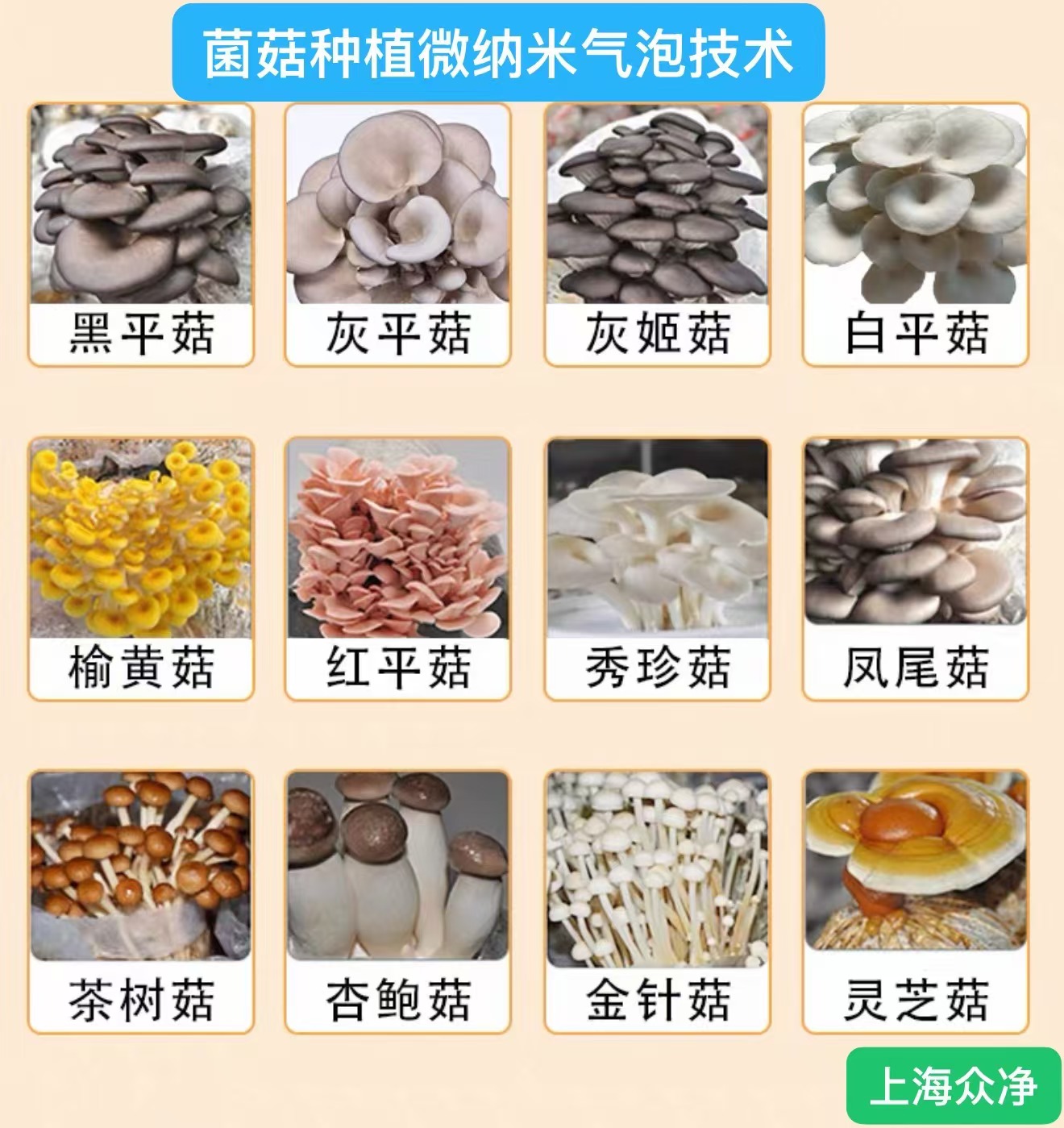Application and advantages of micro nano bubble technology in mushroom cultivation
Click:681Date:2025-06-11 04:50:15
The application of micro nano bubble technology in mushroom cultivation is an innovative practice that integrates modern agricultural technology and physical engineering. The following will provide a detailed explanation from the aspects of technical principles, specific application scenarios, core advantages, and future development potential:
1、 The principle of micro nano bubble technology
Micro nano bubbles refer to bubbles with a diameter of 1-100nm, and their unique properties enable them to play a role in mushroom cultivation:
High dissolved oxygen content: The bubble diameter is extremely small, with a large specific surface area, which can quickly dissolve in water and increase the dissolved oxygen content of the water (up to 3-5 times that of ordinary aeration).
Negative charge characteristics: The surface of bubbles carries a negative charge, which can adsorb impurities in water, improve water quality, and promote the absorption of nutrients by mushrooms.
Long term stability: Staying in water for several hours, continuously releasing oxygen and active substances.
2、 Specific applications in mushroom cultivation
1. Treatment of culture medium
Water quality optimization: Soaking wood chips, cottonseed hulls and other culture medium materials in micro nano bubble water (rich in oxygen and active groups) can reduce harmful substances (such as chlorine and heavy metals) in water, activate nutrients, and improve the permeability and water retention of the culture medium.
Sterilization assistance: The hydroxyl radicals (· OH) generated when bubbles burst have strong oxidizing properties and can assist in killing bacteria in the culture medium, reducing contamination rates.
2. Mycelium cultivation stage
Oxygenation promotes growth: Micro nano bubbles are introduced into the humidification system of the culture chamber or directly injected into the liquid bacterial culture medium to provide sufficient oxygen for hyphae and accelerate their propagation speed (which can shorten the culture period by 10% -20%).
Metabolic regulation: A high dissolved oxygen environment promotes the respiration of mycelium, enhances enzyme activity, accelerates nutrient decomposition, and lays the foundation for the development of fruiting bodies.
3. Sub entity growth stage
Environmental control: air humidity is increased through bubble water spray, and the active oxygen released at the same time can inhibit mold spores in the air and reduce disease.
Quality improvement: For example, in the cultivation of shiitake mushroom and pleurotus ostreatus, the use of micro and nano air soaking in water or spray can make the cap thicker, the stipe stronger, and the color brighter.
4. Wastewater treatment and recycling
After being treated with micro nano bubbles, the wastewater from mushroom cultivation can degrade organic matter (such as residual culture medium debris), achieving the recycling of water resources and reducing environmental costs.

Micro nano bubble technology fundamentally improves the planting efficiency and quality by improving the "water air nutrition" environment for mushroom growth, combining economic value and environmental benefits. Its application prospects in large-scale farms are broad, and it is expected to become an important technical support for modern facility agriculture.



 Home
Home

